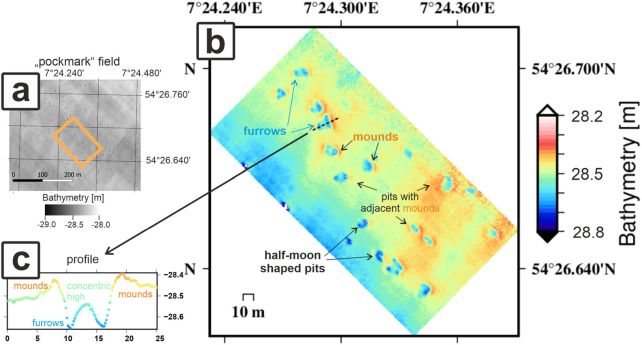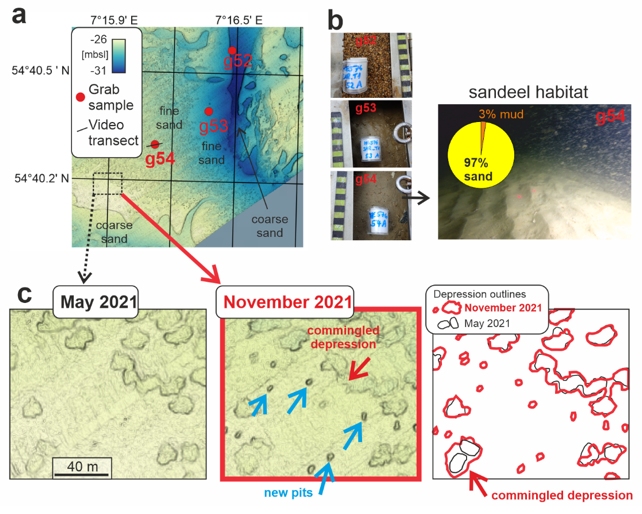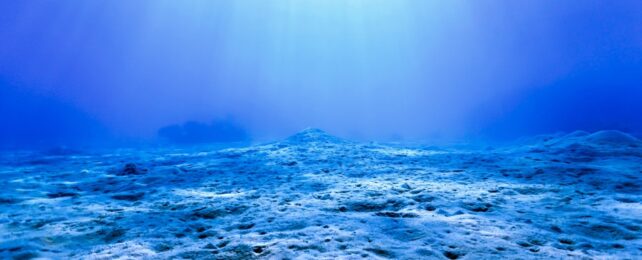The mystery of strange pockmarks that dimple the floor of the North Sea has finally been solved.
These mysterious depressions are not always, as had previously been thought, the result of methane seeping from beneath the seafloor sediment; rather, they're sometimes the mess left behind by porpoises (Phocoena phocoena) and sand eels (Ammodytes marinus) inhabiting the region.
In a study led by geoscientist Jens Schneider von Deimling of Kiel University, scientists have shown that the pockmarks are the work of both animals. Porpoises forage among the seafloor sediment; this disturbs the sand eels nesting therein, which emerge from their holes or are eaten, leaving the pits behind.
"Our results show for the first time that these depressions occur in direct connection with the habitat and behavior of porpoises and sand eels and are not formed by rising fluids," Schneider von Deimling says.
"Our high-resolution data provide a new interpretation for the formation of tens of thousands of pits on the North Sea seafloor, and we predict that the underlying mechanisms occur globally, but have been overseen until now."

The previous interpretation of fluid venting is a plausible explanation, and not necessarily incorrect in some scenarios, but many pockmarks – in fact, a majority – cannot be explained via this mechanism. So, the researchers embarked on a comprehensive study to find out what the real answer is.
They used a combination of high-resolution echosounder seafloor mapping, behavioral biology, habitat mapping, oceanographical analysis, and satellite imaging to study the shape of the seafloor, look for traces of methane, and figure out what animals are active where the pits appear.
They found that the pits are often located at porpoise feeding sites, which reside close to the habitats of sand eels.

The new high-resolution data revealed that marine mammals leave shallow pits on the seafloor, around just 11 centimeters (4.3 inches) deep, as they forage for sand eels. These are similar in shape to deeper, more pronounced pockmarks that can be found in other locations around the world.
"The formation mechanism of these pits, as we call them, probably also explains the existence of numerous crater-like depressions on the seafloor worldwide, which have been misinterpreted as the result of methane gas leaks," Schneider von Deimling says.
Once again, living creatures have been found making a profound difference to the shape of the seafloor. It's like a pufferfish love nest, all over again. The research, the team says, suggests that we've been vastly underestimating the effect marine vertebrates have on the ocean floor environment.
The research has been published in Communications Earth & Environment.
